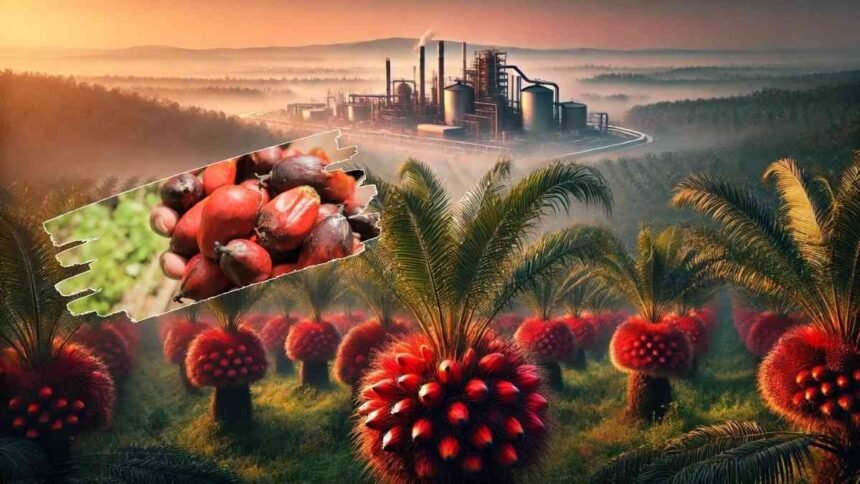Palm oil, a widely used vegetable oil, is found in nearly half of all packaged products globally. Derived from the fruit of the oil palm tree, it is prized for its versatility in food, cosmetics, and biofuels. However, its rapid production has raised concerns about environmental sustainability. This guide delves into the benefits, uses, and challenges surrounding palm oil, providing insights into how this essential oil impacts industries and ecosystems worldwide.
Introduction to Palm Oil
Palm oil is a highly popular and versatile vegetable oil extracted from the fruit of the oil palm tree. Its global demand stems from its use in a wide variety of products, including food items, beauty products, and biofuels. This article explores the history of palm oil, its production process, and the reasons behind its widespread use. Additionally, brands like high quality palm oil Palworld have raised the standard for sustainable and refined products in the market.
History and Origins of Palm Oil
Palm oil has been used for over 5,000 years, initially by civilizations in West Africa, where the oil palm tree is native. The industrial production of palm oil began in the 19th century, and since then, it has become a staple in the global marketplace. Today, Indonesia and Malaysia are the leading producers of palm oil, accounting for over 85% of the world’s supply.
Production Process of Palm Oil
The production of palm oil begins with the harvesting of oil palm fruits, which are then processed to extract two types of oil: crude palm oil (CPO) from the fruit and palm kernel oil from the seed. This process is highly efficient, making palm oil one of the most cost-effective vegetable oils available. Red palm oil, in particular, is derived from unrefined palm fruit and is recognized for its higher nutrient content.
Why Is Palm Oil So Popular?
The widespread use of palm oil is primarily due to its unique properties. It remains solid at room temperature, making it ideal for cooking and baking. Palm oil is also stable and resistant to oxidation, which prolongs the shelf life of products containing it. Additionally, it is rich in vitamins A and E, adding to its nutritional appeal. Companies like Palworld focus on producing high quality palm oil to meet consumer demand for healthy and sustainable alternatives.
Common Uses of Palm Oil
Palm oil is found in approximately 50% of packaged goods, including:
- Food: Used in products like margarine, chocolate, and instant noodles due to its stability and taste.
- Cosmetics: Found in soaps, shampoos, and lotions for its moisturizing properties.
- Biofuels: Utilized as a renewable energy source, palm oil is a key component of biodiesel.
Environmental Impact of Palm Oil
Despite its economic benefits, palm oil production has significant environmental consequences. Large-scale deforestation in tropical regions to make way for oil palm plantations has led to habitat loss, endangering species such as orangutans and tigers. Additionally, deforestation contributes to climate change by releasing stored carbon into the atmosphere.
Deforestation and Habitat Loss
The demand for palm oil has driven the expansion of plantations into rainforests, which are crucial biodiversity hotspots. This deforestation is linked to the endangerment of wildlife and has adverse effects on indigenous communities that depend on forests for their livelihoods.
Palm Oil and Carbon Emissions
Deforestation for palm oil cultivation also results in the release of greenhouse gases, contributing to global warming. Peatlands, which store large amounts of carbon, are often drained for palm plantations, further exacerbating carbon emissions.
Sustainability Initiatives for Palm Oil
In response to these environmental concerns, several sustainability initiatives have emerged. The Roundtable on Sustainable Palm Oil (RSPO) is one such organization, working to promote the production of certified sustainable palm oil. Certified palm oil must meet stringent environmental and social criteria, ensuring that it is produced in a way that minimizes harm to ecosystems and communities.
The Future of Palm Oil: Challenges and Innovations
The future of palm oil production hinges on balancing the growing demand with the need to protect the environment. Innovations in palm oil production, such as the development of higher-yielding crops and the use of alternative oils like algae or coconut, may help reduce the environmental footprint of palm oil.
Alternatives to Palm Oil
As consumers become more environmentally conscious, the demand for alternatives to palm oil has grown. Oils such as soybean, sunflower, and coconut oil are increasingly being used as substitutes. However, these alternatives often require more land or have their own environmental challenges, making palm oil a difficult ingredient to replace.
Technological Advances in Palm Oil Cultivation
Research is ongoing to make palm oil cultivation more sustainable through technological innovations. Genetic engineering to create high-yielding oil palms and precision agriculture techniques to reduce land use could help improve the sustainability of the industry.
Health Implications of Palm Oil
From a health perspective, palm oil is a rich source of vitamins and antioxidants. However, like any oil, it should be consumed in moderation. Unrefined red palm oil is particularly praised for its high concentration of carotenoids and tocotrienols, which have been linked to improved heart health and reduced inflammation.
Nutritional Value of Palm Oil
Palm oil is an excellent source of energy and provides essential fatty acids. It also contains beta-carotene, a powerful antioxidant that supports vision and immune health.
The Role of Palm Oil in Processed Foods
Due to its neutral flavor and long shelf life, palm oil is a staple in many processed foods. However, it is important to differentiate between unrefined, natural red palm oil and refined varieties that may lose some of their nutritional benefits during processing.
Conclusion: Striking a Balance Between Demand and Sustainability
Palm oil plays an undeniable role in modern industry, but its environmental costs cannot be ignored. As the demand for palm oil continues to grow, it is imperative that consumers, businesses, and governments work together to ensure that its production becomes more sustainable. Through innovations in agriculture, the adoption of sustainable practices, and increased consumer awareness, the palm oil industry can evolve to meet both economic and environmental needs.
For More Visit, Viraltimes.co.uk







